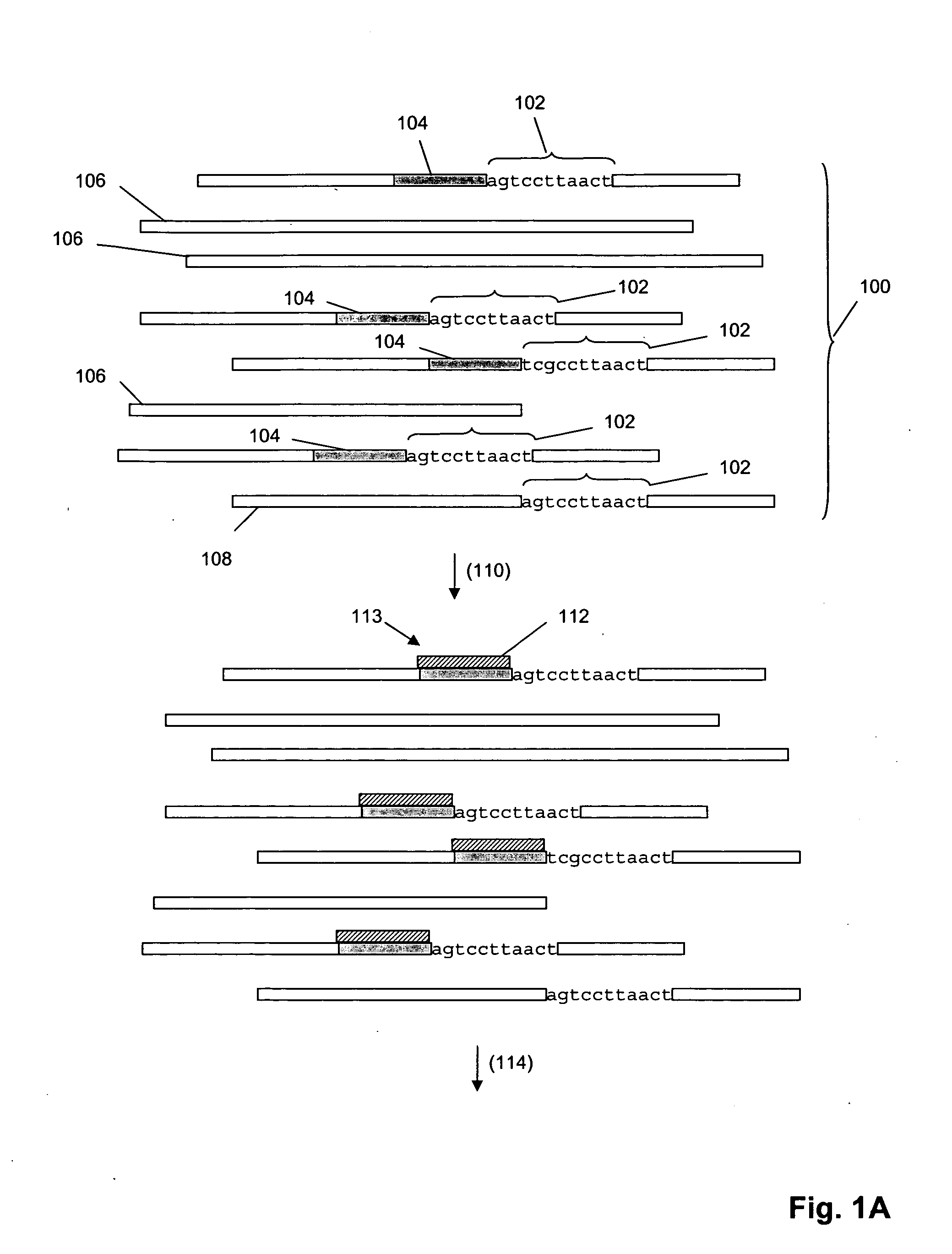Genetic analysis by sequence-specific sorting
- Summary
- Abstract
- Description
- Claims
- Application Information
AI Technical Summary
Benefits of technology
Problems solved by technology
Method used
Image
Examples
Embodiment Construction
[0041] In one aspect, the invention provides methods for sorting polynucleotides based on predetermined sequence characteristics to form subpopulations of reduced complexity. In another aspect, such sorting methods are used to analyze populations of uniquely tagged polynucleotides, such as genome fragments. That is, mixtures may be formed containing fragments of genomic DNA from different individuals such that each individual's DNA is labeled with a unique oligonucleotide tag. During or at the conclusion of repeated steps of sorting in accordance with the invention, the tags may be replicated, labeled and hybridized to a solid phase support, such as a microarray, to provide a simultaneous readout of sequence information related to the genomic DNA. Predetermined sequence characteristics include, but are not limited to, a unique sequence region at a particular locus, or a series of polymorphisms, such as insertions, deletions, or substitutions, at a series of loci, or the like. A pred...
PUM
| Property | Measurement | Unit |
|---|---|---|
| Electric charge | aaaaa | aaaaa |
| Digital information | aaaaa | aaaaa |
| Frequency | aaaaa | aaaaa |
Abstract
Description
Claims
Application Information
 Login to View More
Login to View More - R&D
- Intellectual Property
- Life Sciences
- Materials
- Tech Scout
- Unparalleled Data Quality
- Higher Quality Content
- 60% Fewer Hallucinations
Browse by: Latest US Patents, China's latest patents, Technical Efficacy Thesaurus, Application Domain, Technology Topic, Popular Technical Reports.
© 2025 PatSnap. All rights reserved.Legal|Privacy policy|Modern Slavery Act Transparency Statement|Sitemap|About US| Contact US: help@patsnap.com



